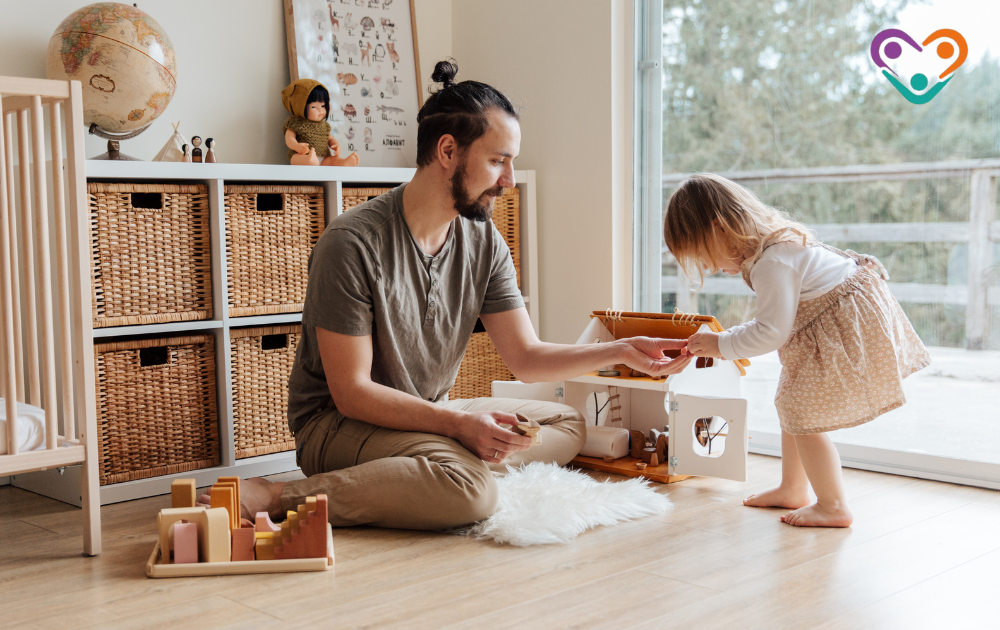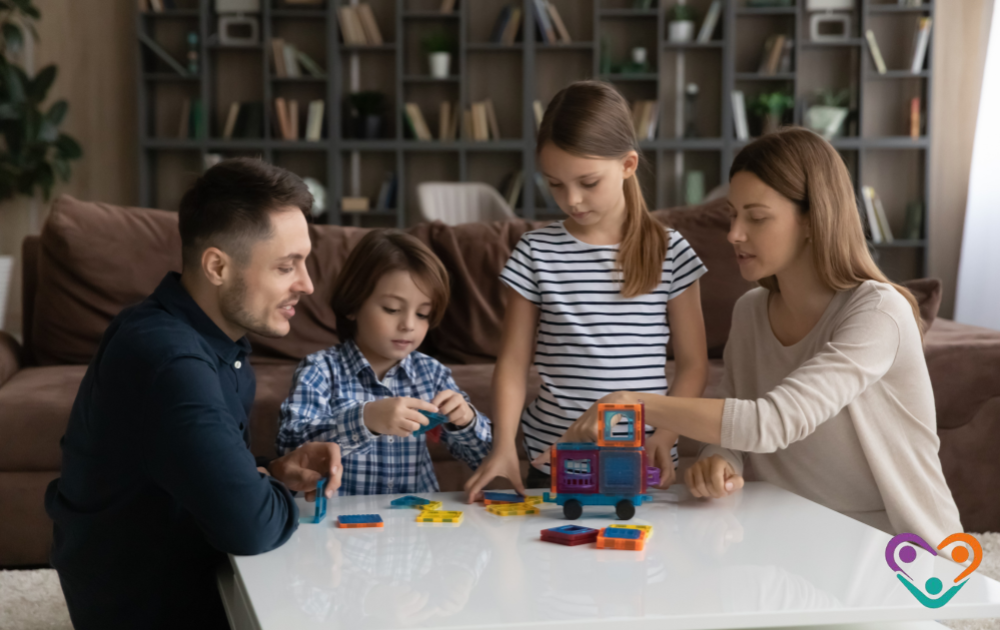In-home ABA therapy is one of the most effective treatments for children with autism spectrum disorder (ASD). As a parent, understanding what to expect from these services can help you make informed decisions about your child’s care. This guide provides a comprehensive overview of in-home ABA therapy, the services you can expect, and how they benefit your child’s development.
Understanding ABA Therapy
Applied Behavior Analysis (ABA) therapy is a well-established treatment that uses principles of learning theory to teach individuals new skills, promote positive behaviors, and reduce challenging ones. ABA is evidence-based, meaning it has been proven to be effective in improving the lives of people with autism. The therapy focuses on modifying specific behaviors through reinforcement techniques, structured programs, and a variety of teaching strategies tailored to the child’s needs.
When ABA therapy is provided at home, it offers a personalized environment for your child to learn and thrive. In-home therapy allows for real-world application of skills in a natural, familiar setting, which can lead to more successful outcomes.
The Role of ABA Therapists in In-Home Therapy
In-home ABA therapy is typically provided by a team of professionals, including Board-Certified Behavior Analysts (BCBAs), Registered Behavior Technicians (RBTs), and sometimes other specialists. These professionals are trained to assess your child’s behavior, design a customized treatment plan, and implement interventions in the home.
A BCBA is responsible for the overall treatment planning and the supervision of RBTs or other therapists. They perform thorough assessments to identify your child’s strengths and challenges and develop a treatment plan based on this information. The BCBA is also responsible for monitoring your child’s progress and making adjustments to the therapy plan as necessary.
An RBT is typically the therapist who works with your child on a day-to-day basis. They implement the interventions outlined by the BCBA, collect data on your child’s progress, and provide feedback to the supervising BCBA.

Personalized Treatment Plans
One of the key benefits of in-home ABA therapy is the personalized approach. Each child with autism has unique needs, and a tailored treatment plan is essential for addressing those needs effectively. The BCBA will conduct an initial assessment to gather information about your child’s behavior, preferences, strengths, and areas that require improvement.
The assessment usually involves interviews with the parents, observations of the child, and possibly standardized testing. Based on this information, the BCBA will create an individualized treatment plan, setting goals that are both achievable and meaningful for your child.
Some of the common goals in an ABA therapy plan include:
- Improving communication skills
- Increasing social skills and interactions with peers and family members
- Teaching self-help skills like dressing or toileting
- Reducing challenging behaviors such as aggression or tantrums
- Enhancing academic or pre-academic skills
Once the plan is in place, the RBT will work with your child to teach these skills using a variety of strategies, including discrete trial training (DTT), natural environment training (NET), and pivotal response training (PRT).
The Therapy Environment at Home
In-home therapy provides a unique advantage: the ability to teach your child in their natural environment. Since children with autism often thrive in familiar surroundings, in-home ABA therapy helps them generalize the skills they are learning to real-life situations. For example, your child might learn social skills by practicing with family members, or they could work on communication skills while engaging in everyday activities like mealtime or playtime.
The therapist will set up a designated therapy space within the home. This area is usually quiet, with minimal distractions, to allow for focused learning. The space will contain a variety of materials needed for the therapy, such as toys, visual aids, worksheets, or other learning tools.
In addition, the home environment gives the therapist a better understanding of the child’s behavior in different settings. For example, your child may behave differently in the living room compared to a classroom, and in-home therapy provides a more comprehensive picture of these behaviors.

Parent Involvement and Training
One of the most important aspects of in-home ABA therapy is the active involvement of parents. Parents are encouraged to participate in the therapy process and learn techniques to support their child’s progress. The therapist will guide you through strategies to use during sessions and help you integrate those strategies into daily routines.
Training parents is an essential part of ensuring that progress continues when the therapist is not present. ABA therapy doesn’t stop once the session ends; rather, the goal is to create lasting changes in your child’s behavior that carry over into everyday life. Parents are taught how to use positive reinforcement, manage challenging behaviors, and track progress effectively.
In addition to formal training, parents receive ongoing support throughout the course of therapy. Regular communication with the therapist is crucial to addressing any concerns or adjustments needed to the treatment plan.
Expected Frequency and Duration of Sessions
The frequency and duration of ABA therapy sessions vary based on the individual needs of the child. Initially, sessions may be more frequent, often ranging from 10 to 40 hours per week, depending on the severity of the child’s needs and the goals of the treatment plan. As the child progresses, the frequency of therapy may decrease, though consistency is key to long-term success.
Sessions typically last from 1 to 3 hours, and it’s common for multiple sessions to be held per week. Over time, the BCBA may adjust the number of hours per week based on the child’s progress and changing needs.
Measuring Progress
ABA therapy is data-driven, meaning that every session involves collecting detailed data on your child’s progress. This data is used to track improvements, assess the effectiveness of different interventions, and make changes to the treatment plan if necessary.
Your child’s behavior will be assessed through observation and through the use of standardized tools. The BCBA will review this data regularly and adjust goals as needed. At the end of every month or quarter, you will receive progress reports to keep you updated on your child’s achievements.

Benefits of In-Home ABA Therapy
There are numerous benefits to in-home ABA therapy, including:
- Familiar Environment: Being in a familiar setting helps children with autism feel more comfortable, reducing stress and anxiety. This familiarity promotes better engagement and helps them focus on learning new skills.
- Consistency: In-home ABA therapy allows for consistent reinforcement of learned behaviors throughout the day. With the help of trained therapists, parents can provide additional reinforcement between sessions.
- Individualized Focus: Because therapy occurs in the home, the treatment plan can be customized to meet the unique needs of your child. ABA is highly flexible and can address a wide variety of skills and behaviors.
- Real-Life Learning: In-home therapy allows children to apply the skills they learn in real-life contexts. This increases the likelihood that the skills will generalize to other situations, making them more useful in day-to-day life.
Challenges of In-Home ABA Therapy
While in-home ABA therapy is highly beneficial, there are also some challenges to consider. These may include:
- Limited Social Interaction: In-home therapy may limit opportunities for your child to interact with peers. While siblings or other family members can be involved, it’s still important to ensure that your child gets ample social interaction outside of the therapy sessions.
- Space Constraints: Some families may have limited space in their homes to create a dedicated therapy area. However, therapists are often creative in adapting existing spaces to meet the needs of the therapy.
- Cost and Insurance Coverage: In-home ABA therapy can be expensive, and while many insurance plans now cover ABA therapy, it’s important to check with your provider to determine the extent of coverage.
Preparing for In-Home ABA Therapy
To ensure that the therapy process goes smoothly, it’s helpful to prepare both yourself and your child for in-home sessions. Here are some steps to take before therapy begins:
- Set Up a Dedicated Space:If possible, designate a quiet, distraction-free area for therapy sessions.
- Prepare Your Child:Talk to your child about the therapist’s visit in a way that feels comfortable for them. Some children may need time to adjust to having a new person in their home.
- Establish Routines:Consistency is key in ABA therapy. Try to establish a daily routine for therapy sessions so your child knows what to expect.
In-home ABA therapy services offer many benefits for children with autism, providing a personalized and effective way to teach skills, improve behavior, and foster positive growth. With the right support from trained professionals, in-home ABA therapy can help your child reach their full potential, all while being in the comfort of their own home. Parents play an essential role in the therapy process, and with ongoing communication and training, they can ensure that their child’s progress continues beyond the therapy session.
If you’re considering in-home ABA therapy in New York, be sure to reach out to a qualified provider to discuss your child’s needs and get started on the path to meaningful progress.

Discover Expert Support with Golden Care Therapy
If you’re seeking top-tier ABA therapy in New York, Golden Care Therapy is here to help. Our dedicated team provides individualized care that empowers children and adults with autism to thrive. We combine evidence-based practices with compassionate support to achieve meaningful progress in behavior, communication, and social skills. Whether you’re new to ABA therapy or looking to enhance your existing plan, our professionals are ready to tailor an approach that best fits your needs. Contact us todayto learn how Golden Care Therapy can support your journey toward growth and success.



